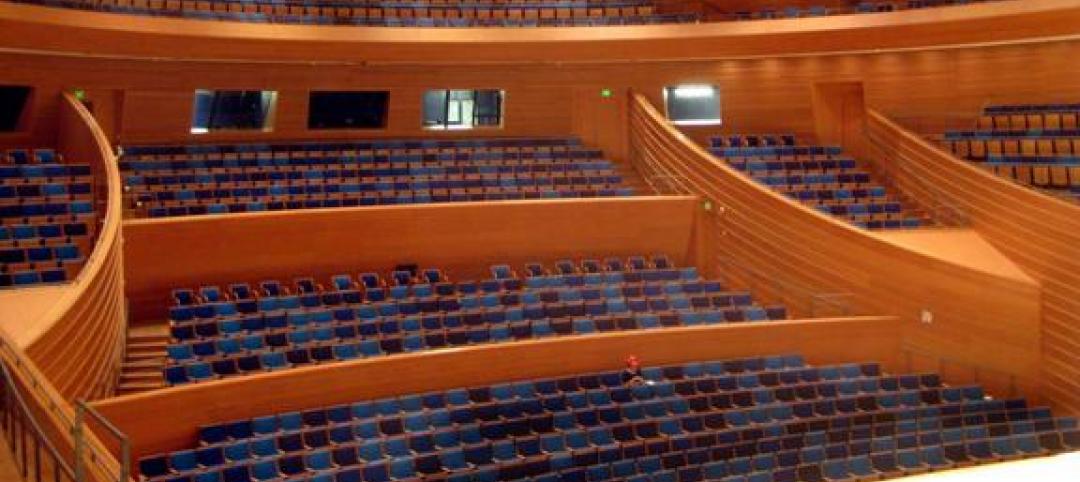The Southern Forest Products Association (SFPA) does not test lumber or establish design values. SFPA markets lumber products and helps users understand Southern Pine grading rules and design values. “Our objective is to provide information helpful to our member producers and their customers,” said SFPA president Adrian Blocker. “We feel a summary of the process used to develop new design values will clarify many of the questions we have received.”
Design values for structural lumber go through a rigorous, step-by-step process, including development by the appropriate rules-writing agency (such as the Southern Pine Inspection Bureau (SPIB) for Southern Pine), approval by the American Lumber Standard Committee (ALSC) Board of Review, and adoption into the building codes by the International Codes Council.
- ALSC provides the basis for design value acceptance. ALSC serves as the standing committee for the American Softwood Lumber Standard, Voluntary Product Standard PS 20, developed in accordance with U.S. Department of Commerce procedures. ALSC administers the American Lumber Standard system which provides the basis for acceptance of lumber and design values for lumber by the building codes throughout the U.S. The last major change for visually graded dimension lumber occurred in 1991 when design values for Southern Pine and other North American species were published based on In-Grade testing of full-size samples of commercially produced lumber.
- The resource is monitored by rules-writing agencies. Since 1994, the Southern Pine Inspection Bureau (SPIB) has conducted an annual resource monitoring program developed in collaboration with the U.S. Forest Products Laboratory (FPL).
- Possible resource changes are detected. During 17 years of resource monitoring by SPIB, the level established to trigger additional testing was never reached. However, overall trends in the annual test data suggested a possible shift in the raw material resource or product mix. These trends, along with anecdotal external information, prompted SPIB to conduct an enhanced testing program.
- Sampling and testing plans are approved by the ALSC Board of Review. SPIB’s Special Procedures for Monitoring Southern Pine Design Values plan was approved on November 18, 2010.
- Testing and data analysis is conducted by rules-writing agencies. SPIB partnered with Timber Products Inspection to sample No.2 2x4 test specimens according to the approved plan. SPIB and Timber Products conducted destructive tests in bending and tension, plus gathered stiffness and property data, all in accordance with ASTM International standards. SPIB performed the data analysis, also in conformance with ASTM standards. The SPIB Board of Governors studied the results and considered all options, including the possibility of modifying SPIB’s Standard Grading Rules for Southern Pine Lumber to cull out the lowest strength pieces. The conclusion reached was that the test results did not support such a grading rule change. Instead, the SPIB Board of Governors concluded the appropriate outcome was to propose new design values for all grades and sizes of visually graded Southern Pine dimension lumber. Moving forward, the SPIB Board of Governors committed to the completion of the full In-Grade testing matrix by testing Select Structural 2x4s, No.2 and Select Structural 2x8s, and No.2 and Select Structural 2x10s. SPIB and Timber Products will conduct destructive tests in bending, tension and compression, plus gather stiffness and property data. Testing is scheduled to be completed by Spring 2012.
- Proposed new design values are submitted to the ALSC Board of Review by rules-writing agencies. SPIB was the first agency to submit proposed new design values. The National Lumber Grading Authority has submitted its monitoring data. All other rules-writing agencies are immediately undertaking evaluation of their resources and have submitted sampling and testing plans for their species to the ALSC Board of Review.
- Technical review is performed by the U.S. Forest Products Laboratory at the request of the ALSC Board of Review.
- New design values are approved by the ALSC Board of Review. The ALSC Board of Review will review information involving design values for all species at its next meeting, scheduled for October 20, 2011. New design values for Southern Pine could be approved at that meeting. Or, the ALSC Board of Review may decide additional information, such as the results from SPIB’s full In-Grade matrix testing, is needed before granting final approval.
- New design values are published by rules-writing agencies. SPIB will publish new design values for visually graded Southern Pine dimension lumber upon approval by the ALSC Board of Review.
- New design values are incorporated into the building codes by reference through the National Design Specification® (NDS®). The American Wood Council (AWC) will update the NDS Design Value Supplement, a compendium of approved lumber design values published by rules-writing agencies. In addition, AWC will update the Wood Frame Construction Manual (WFCM) which references the NDS supplement for development of prescriptive designs. AWC will submit new span and application tables to the International Codes Council, as well as propose other code and standard changes needed to incorporate new design values into the building codes.
State and local code jurisdictions determine adoption and enforcement timelines. Rules-writing agencies are responsible for making new design values publically available upon approval by the ALSC Board of Review. SFPA and AWC will assist by providing the new information to the design, specification, user, and enforcement communities. It is then the responsibility of building code jurisdictions to determine how and when to begin enforcement.
“SFPA is the marketing organization that communicates new design value information with key customer groups and allied industry organizations,” said Blocker. “Many in the construction industry, including SFPA, support an orderly and logical transition for achieving a timely changeover to new design values while avoiding project stoppages or delays. BD+C
Related Stories
| Sep 14, 2011
Lend Lease’s role in 9/11 Memorial & Museum
Lend Lease is honored to be the general contractor for the National September 11 Memorial & Museum project at the World Trade Center site in New York City.
| Sep 14, 2011
Thornton Tomasetti’s Poon named to the Council on Tall Buildings and Urban Habitat’s Board of Trustees
During his 30-plus years of experience, Poon has been responsible for the design and construction of super high-rise structures, mixed-used buildings, hotels, airports, arenas and residential buildings worldwide.
| Sep 12, 2011
PVs play new roles as a teaching tool
Solar installations are helping K-12 schools around the country save money and teach students the intricacies of renewable energy sources.
| Sep 12, 2011
Living Buildings: Are AEC Firms up to the Challenge?
Modular Architecture > You’ve done a LEED Gold or two, maybe even a LEED Platinum. But are you and your firm ready to take on the Living Building Challenge? Think twice before you say yes.
| Sep 12, 2011
First phase of plan to revitalize Florida's Hialeah Park announced
This is the first project of a master plan developed to revive the historic racetrack.
| Sep 9, 2011
Kauffman Center for the Performing Arts in Kansas City opens this month
Theatre Projects played the lead role in theatre design and planning as well as in engineering the customized theatre equipment. BNIM in Kansas City served as the executive architect.
| Sep 9, 2011
$22 million investment made in energy efficient building maker
The buildings use at least 25% less energy than the strictest building codes in the U.S., and as much as 80% less energy in certain parts of the country.
| Sep 8, 2011
Two promoted at ajc architects
ajc architects announced the promotion of Joshua W. Greene, AIA, NCARB, LEED Green Associate to Associate Principal of the firm. The firm also announced that Kent Rigby, AIA, has been promoted to Associate Architect.
| Sep 7, 2011
KSS Architects wins AIA NJ design award
The project was one of three to win the award in the category of Architectural/Non-Residential.

















